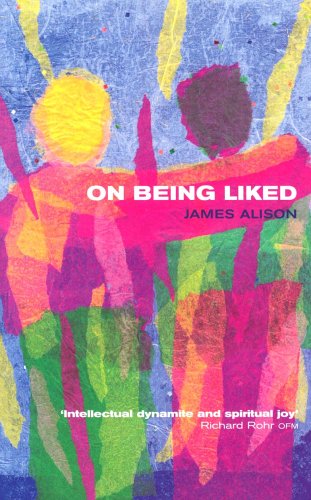This June, I was privileged to accompany LGBTQ students from a number of Canadian high schools during our Pride Month conference. This year’s theme was “Express Yourself.” The aim for the day was to provide students with opportunities to connect with one another, and with caring adults, in a format that fostered confidence and authenticity through self-expression.
In a significant moment, a pride flag was raised outside the school for only the second year, after approval from the school board. As the Canadian flag with rainbow colors was raised, the students said:
As we raise the flag, we remember all the members and allies of the LGBTQ community who came before us and helped pave the way for equity and free expression. As we raise the flag, let us continue our mission to spread awareness and love throughout our communities. Let this flag be a reminder of our identities and the important role we have to play in the lives of those we meet. Moreover, let it remind us that there is more work to be done.
But after the ceremony, a staff member approached me to raise his objections. He told me that I shouldn’t be here supporting this. He quoted Bible passages about how homosexuality is forbidden and evil. I just listened, and explained to him that I was there to support the students. I said that raising the flag lets students know that they’re safe, that we see them and that they belong at the school. I wonder if he heard me.
As an oblate working with the poor and marginalized, I’m used to this kind of criticism. But, I thought, if he says this to me, what does he say to the students in the classroom?
“Catholic schools should consciously create an environment where students who feel marginalized, rejected or vulnerable can experience safe, nurturing, inclusive communities of faith.”
In 2004, the Ontario bishops’ conference issued pastoral guidelines for LGBTQ students. “Catholic schools should consciously create an environment where students who feel marginalized, rejected or vulnerable can experience safe, nurturing, inclusive communities of faith,” they wrote.
Nearly ten years later, we are still working on it. But there is hope. With that in mind, here are five things Catholic school workers should know about accompanying LGBTQ students.
1. Accept LGBTQ students with “respect, compassion and sensitivity”
The Catechism of the Catholic Church teaches that LGBTQ persons, using the term “homosexuals,” must be accepted with “respect, compassion and sensitivity.” The church also teaches that all forms of “unjust discrimination” against LGBTQ people ought to be avoided (#2358).
Schools offer students opportunities for education, social interactions and personal development. For LGBTQ students, as for others, these school years are when they grow into self-awareness and understanding, self-acceptance and social maturity. It’s a time of vulnerability for these young people, when they learn about themselves and learn how to open up to others. When a school creates the culture of respect, compassion and sensitivity, it provides a safe environment in which these students can grow.
2. Remember that LGBTQ students are, first and foremost, human beings
During Pride Month, you may hear some critics use dehumanizing language against LGBTQ people, referencing an “ideology” or a “gay agenda.” In 2019, a Polish archbishop compared LGBTQ leaders to communists and said the country had been infected with by a “rainbow plague.”
In their 2011 document, the Canadian bishops urged Catholic youth ministers to avoid “injustice, hatred or malice in speech or action” against LGBTQ people.
In a 2011 pastoral letter, the Canadian bishops emphasized that LGBTQ people, referring to them as people “with same-sex attraction,” are “human beings, our brothers and sisters in Christ.” The critical attitudes of some Polish bishops, therefore, do not treat LGBTQ people as real human beings.
Saint Eugène de Mazenod, the founder of the Missionary Oblates of Mary Immaculate, had a unique pedagogy in ministering with young people. While he wrote some 200 years ago, his approach remains relevant. “We must lead men to act like human beings, first of all, and then like Christians, and, finally, we must help them to become saints,” he wrote.
Catholic schools can best help young people “act like human beings” when they seek to foster students’ personal growth and recognize their dignity.
3. Understand the enormous pressures faced by LGBTQ students
In their 2011 document, the Canadian bishops urged Catholic youth ministers to avoid “injustice, hatred or malice in speech or action” against LGBTQ people. They noted that LGBTQ young people are often met with ignorance from others and forced into isolation. This, along with bullying, name calling and other forms of harassment is a reality for many LGBTQ students in our schools.
This June, the Campaign Life Coalition, an Ontario-based conservative political group, protested the raising of pride flags by Catholic schools. Just imagine how our LGBTQ students must have felt. Once again, they were met with injustice, hatred and malice in speech and action.
4. Listen to LGBTQ students
Flying pride flags at our schools in June sends a simple and profound message to LGBTQ students. To quote “Ted Lasso,” it tells them that “we care very much. We care about who you are and what you must’ve been going through.”
When we meditate on Jesus’ encounters with the people of his day, we can see his compassion, not judgment; his love, not condemnation; his accompaniment, not sidelining.
One of the arguments I’ve heard against flying rainbow flags at Catholic schools is that the Cross, not the rainbow, is the ultimate symbol of inclusion and God’s love towards all. This is true, but it also misses the gay community’s point of view. A similar argument was used during the Crusades and for colonization. And we were so wrong! For LGBTQ students, the rainbow flag represents their identity. It represents unity in diversity, inclusion and belonging. And seeing the flag when they come to school tells them they are welcomed.
5. Offer LGBTQ students the love of Christ
The 2011 bishops’ document encourages clergy and the laity to “be attentive to the needs” of LGBTQ people. “What would Jesus do?” might sound cheesy these days, but isn’t that question at the heart of the Gospel? When we meditate on Jesus’ encounters with the people of his day, we can see his compassion, not judgment; his love, not condemnation; his accompaniment, not sidelining.
“And Jesus looking upon him loved him, and said to him, ‘You lack one thing; go, sell what you have, and give to the poor, and you will have treasure in heaven; and come, follow me.'” (Mk. 10:21)
I have received lots of criticism online from “holy and righteous” strangers for attending the pride flag raising and for my compassionate accompaniment of LGBTQ students. But I have also received lots of support and encouragement. Recently, I got a note from a friend. “You are a brave guy. It is not an easy road you have chosen to walk. Navigate carefully. Let love be the underlying motivation—always,” the friend wrote. I believe that love, not hate, is always the answer.




